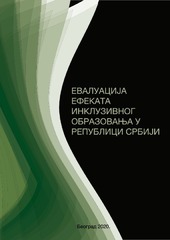Приказ основних података о документу
Izvori informisanja o reproduktivnom zdravlju osoba sa oštećenjem vida i osoba bez oštećenja vida
Sources of information on reproductive health of persons with visual impairment and persons without visual impairment
| dc.contributor | Anđelković Marija | |
| dc.contributor | Sretenović Ivana | |
| dc.creator | Stekić, Dunja | |
| dc.creator | Jablan, Branka | |
| dc.creator | Stanimirov, Ksenija | |
| dc.creator | Stojković, Irena | |
| dc.date.accessioned | 2021-09-21T08:58:53Z | |
| dc.date.available | 2021-09-21T08:58:53Z | |
| dc.date.issued | 2020 | |
| dc.identifier.isbn | 978-86-6203-145-7 | |
| dc.identifier.uri | http://www.icf.fasper.bg.ac.rs/zbornici/20201221_1-ZBORNIK-RADOVA-SKUP-NAC_2020.pdf | |
| dc.identifier.uri | http://rfasper.fasper.bg.ac.rs/handle/123456789/3461 | |
| dc.description.abstract | Reproductive health care enables the birth of healthy offspring, the prevention of diseases with a high mortality rate and is а part of personal responsibility for one’s own health. People with visual impairment may have difficulty gaining knowledge about this health domain. The goal of this paper was to determine the information sources on the reproductive health of persons with visual impairment and without it, and to verify gender differences in relation to these sources. The research includes 50 respondents with visual impairment and 50 respondents without visual impairment, equal in gender and age. It was found that is the most important source of information is the mother, and according to the frequency, the answer teacher also stands out, while doctors are the least frequently mentioned. Statistically significant differences (χ2(1) = 4.332, p = 0.037) between subsamples occur only if the answer is father, and there are due to differences in the answers of the respondents (χ2(1) = 5.472, p = 0.019). Women without visual impairment don’t mention the father as source of information, while 17.2% women with visual impairment was mentioned the father as source information. The answer mother is equally represented information source in female respondents from both subsamples, while this answer is significantly less represented in the group of males with visual impairment in compare with men without visual impairment. Only 6.9% of women without visual impairment mentioned doctors, while at women and men with visual imapirment and men without visual impairment this answer was similarly represented (about 14%). | sr |
| dc.description.abstract | Briga o reproduktivnom zdravlju omogućava rađanje zdravog potomstva, sprečavanje oboljenja s visokom stopom mortaliteta i deo je lične odgovor- nosti za sopstveno zdravlje. Osobe sa oštećenjem vida mogu imati teškoća sa sticanjem znanja o ovom domenu zdravlja. Cilj rada je bio utvrditi izvore informisanja o reproduktivnom zdravlju kod osoba sa oštećenjem vida i osoba bez oštećenja vida, i proveravanje polnih razlika u vezi s pomenutim izvorima. Istraživanjem je obuhvaćeno 50 ispitanika sa oštećenjem vida i 50 ispitani- ka bez oštećenja vida ujednačenih prema polu i uzrastu. Utvrđeno je da je majka najvažniji izvor informisanja, a prema učestalosti se izdvaja i odgovor nastavnik, dok su lekari najređe navođeni. Statistički značajne razlike (χ2(1) = 4,332, p = 0,037) između poduzoraka javljaju se samo kod odgovora otac, a uslovljene su razlikama u odgovorima ispitanica (χ2(1) = 5,472, p = 0,019). Žene bez oštećenja vida ne navode oca kao izvor informisanja, dok je 17,2% žena sa oštećenjem vida navelo da je otac izvor informisanja. Majka je jednako zastupljen izvor informisanja kod žena iz oba poduzorka, dok je ovaj odgovor kod muškaraca sa oštećenjem vida znatno manje zastupljen u odnosu na muškarce bez oštećenja vida. Lekare je navelo 6,9% žena tipičnog razvoja, dok je kod žena i muškaraca sa oštećenjem vida i muškaraca tipičnog razvoja ovaj odgovor slično zastupljen (oko 14%). | sr |
| dc.language.iso | sr | sr |
| dc.publisher | Univerzitet u Beogradu - Fakultet za specijalnu edukaciju i rehabilitaciju | sr |
| dc.rights | openAccess | sr |
| dc.rights.uri | https://creativecommons.org/licenses/by/4.0/ | |
| dc.source | Nacionalni naučni skup „Evaluacija efekata inkluzivnog obrazovanja u republici Srbiji” - Zbornik radova | sr |
| dc.subject | reproductive health | sr |
| dc.subject | people with visual impairment | sr |
| dc.subject | sources of information | sr |
| dc.subject | gender differences | sr |
| dc.subject | reproduktivno zdravlje | sr |
| dc.subject | osobe sa oštećenjem vida | sr |
| dc.subject | izvori informisanja | sr |
| dc.subject | polne razlike | sr |
| dc.title | Izvori informisanja o reproduktivnom zdravlju osoba sa oštećenjem vida i osoba bez oštećenja vida | sr |
| dc.title | Sources of information on reproductive health of persons with visual impairment and persons without visual impairment | sr |
| dc.type | conferenceObject | sr |
| dc.rights.license | BY-SA | sr |
| dc.citation.epage | 168 | |
| dc.citation.spage | 159 | |
| dc.identifier.fulltext | http://rfasper.fasper.bg.ac.rs/bitstream/id/2670/bitstream_2670.pdf | |
| dc.identifier.rcub | https://hdl.handle.net/21.15107/rcub_rfasper_3461 | |
| dc.type.version | publishedVersion | sr |


